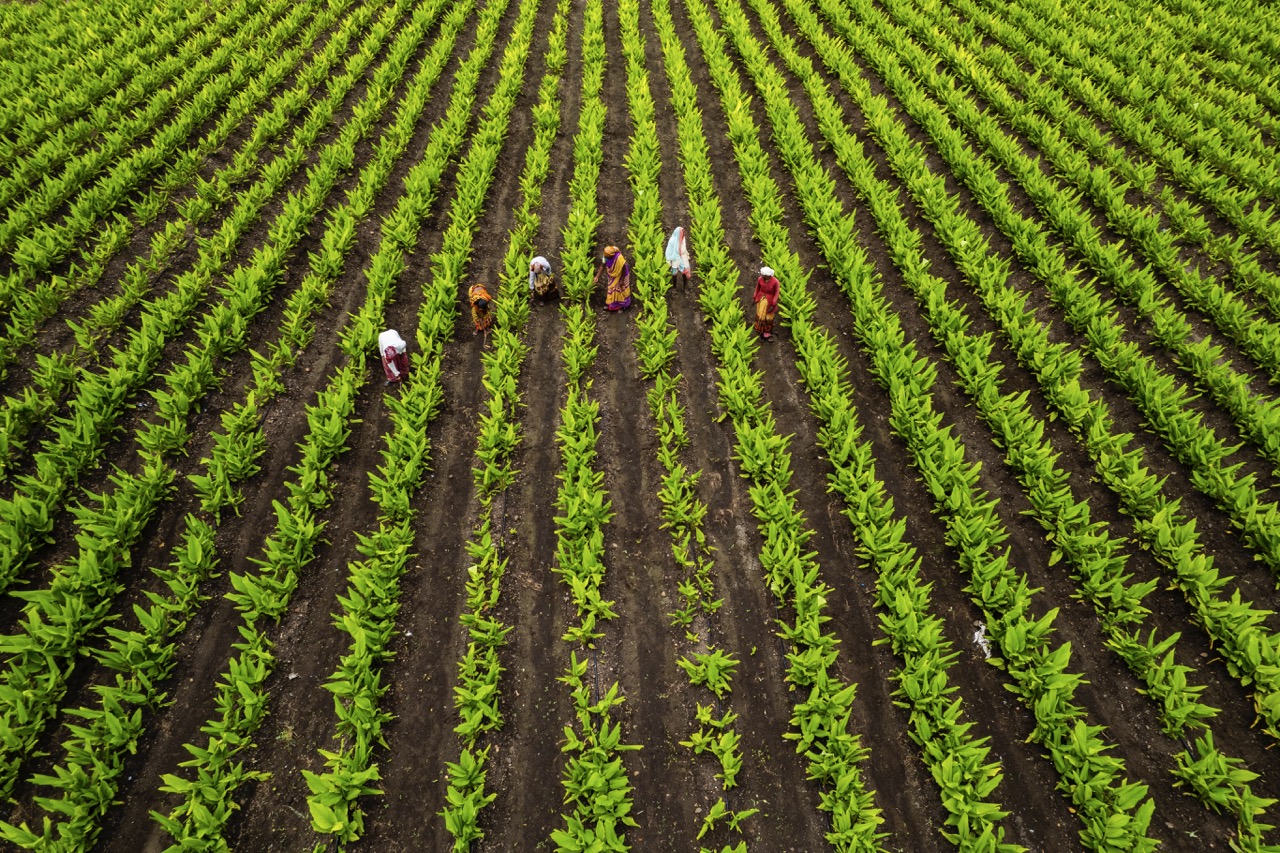In recent years, the global population has increasingly gravitated towards urban living, leading to burgeoning cities that often struggle to meet the nutritional needs of their residents. This urban migration has sparked an innovative response: the rise of vertical farms. These novel agricultural systems are revolutionizing food production within metropolitan areas, presenting a sustainable alternative to traditional farming methods. By utilizing advanced technologies and efficient space management, vertical farms are redefining how cities approach food security, environmental sustainability, and economic growth.
Urban Agriculture Revolution: The Emergence of Vertical Farms
Vertical farming represents a significant shift in agricultural practices, particularly within urban environments where land is scarce. This innovative approach involves cultivating crops in vertically stacked layers, often integrated into buildings or shipping containers. This not only maximizes the use of space but also allows for year-round production, independent of weather conditions. The emergence of these farms marks a transformative period in urban agriculture, as cities look to become self-sustaining in their food production.
The primary motivation behind the rise of vertical farms is the pressing need for cities to adapt to changing food supply challenges. With urban populations projected to continue growing, traditional agricultural practices are increasingly unsustainable. Vertical farms provide a solution by minimizing the distance food must travel from farm to table, thus reducing carbon footprints associated with transportation. Moreover, they can be established in various locations, from rooftops to repurposed warehouses, making food production more accessible within urban centers.
This trend is also fueled by a growing awareness among consumers about the importance of locally sourced food. As public interest in organic and sustainably grown produce increases, vertical farms have gained traction as a viable means to meet this demand. By producing fresh, pesticide-free crops within city limits, vertical farms appeal to conscientious consumers looking for healthier food options while supporting local economies. The emergence of urban vertical farming is not just a response to logistical challenges but also a cultural shift towards more responsible food consumption.
Sustainable Solutions: Addressing Food Security in Cities
Food security remains a critical issue in urban areas, where economic disparities often leave vulnerable populations with limited access to fresh produce. Vertical farms can play a pivotal role in alleviating food deserts—areas lacking affordable and nutritious food options—by providing a reliable source of fresh fruits and vegetables. Their localized production can significantly reduce food insecurity, particularly in neighborhoods that have historically been underserved by traditional grocery stores.
Moreover, vertical farms utilize advanced farming techniques, such as hydroponics and aeroponics, which consume significantly less water compared to conventional farming methods. This resource efficiency is essential in urban settings where water scarcity can be a pressing concern. By employing these sustainable practices, vertical farms not only produce food more efficiently but also contribute to the conservation of vital resources, making them an attractive option for cities grappling with environmental challenges.
Additionally, vertical farms have the potential to create green jobs within urban areas. As these farms proliferate, they require a skilled workforce for operations, maintenance, and management, fostering economic development and providing employment opportunities. This intersection of sustainability and economic growth positions vertical farming as a key player in creating resilient urban food systems that benefit the community as a whole.
Technological Innovations Driving Vertical Farming Growth
The surge in vertical farming is largely attributed to the rapid advancements in agricultural technology. Innovations such as LED lighting, climate control systems, and automated nutrient delivery systems allow for precise control over the growing environment. These technologies not only enhance crop yields but also reduce energy consumption and operational costs, making vertical farms more economically viable. The ability to simulate optimal growing conditions year-round enables producers to maximize production efficiency and minimize waste.
Furthermore, software solutions that leverage artificial intelligence and data analytics are increasingly being integrated into vertical farming operations. These tools monitor plant health, track growth patterns, and optimize resource allocation, driving smarter farming decisions. As technology evolves, vertical farms are becoming more efficient and productive, positioning them as a competitive alternative to traditional farming methods.
Investment in vertical farming technologies has surged, with numerous startups and established agricultural companies entering the market. This influx of capital is fostering research and development, leading to innovative solutions that further enhance the sector’s sustainability and profitability. As urban vertical farming continues to mature, its integration of cutting-edge technology will be critical to overcoming the challenges of feeding an ever-growing urban population.
Challenges and Opportunities in Urban Vertical Farming
Despite its promise, vertical farming faces several challenges that could hinder its widespread adoption. One major hurdle is the initial capital investment required to establish these farms. The cost of high-tech equipment, infrastructure, and ongoing operational expenses can be prohibitive for many entrepreneurs. Additionally, the economic viability of vertical farms is often contingent on the price of energy, as many operations depend heavily on electricity for lighting and climate control.
Market competition also poses a challenge, with traditional agriculture still dominating the landscape in terms of scale and cost. While vertical farms can produce high-quality, locally sourced produce, the price point may remain a barrier for some consumers. To overcome this, vertical farms must find ways to reduce costs, improve efficiency, and enhance their market appeal through branding and consumer education about the benefits of locally grown food.
Nevertheless, the opportunities within urban vertical farming are vast. As cities continue to face challenges related to food security, environmental sustainability, and economic development, vertical farms stand ready to address these issues. Collaborative efforts between governments, businesses, and communities can create supportive policies and infrastructure that foster the growth of vertical farms. By embracing this innovative agricultural model, cities can pave the way for a more sustainable and resilient future.
The rise of vertical farms in urban areas is not just a trend; it is a necessary evolution in how cities approach food production and sustainability. By ingeniously utilizing technology and space, vertical farms hold the key to addressing critical challenges such as food security and environmental degradation. As this agricultural revolution continues to unfold, the potential for vertical farms to reshape urban landscapes and improve the quality of life for city dwellers becomes increasingly apparent. With continued support, innovation, and collaboration, vertical farming can play a pivotal role in the urban agriculture revolution, leading cities toward a more sustainable future.










